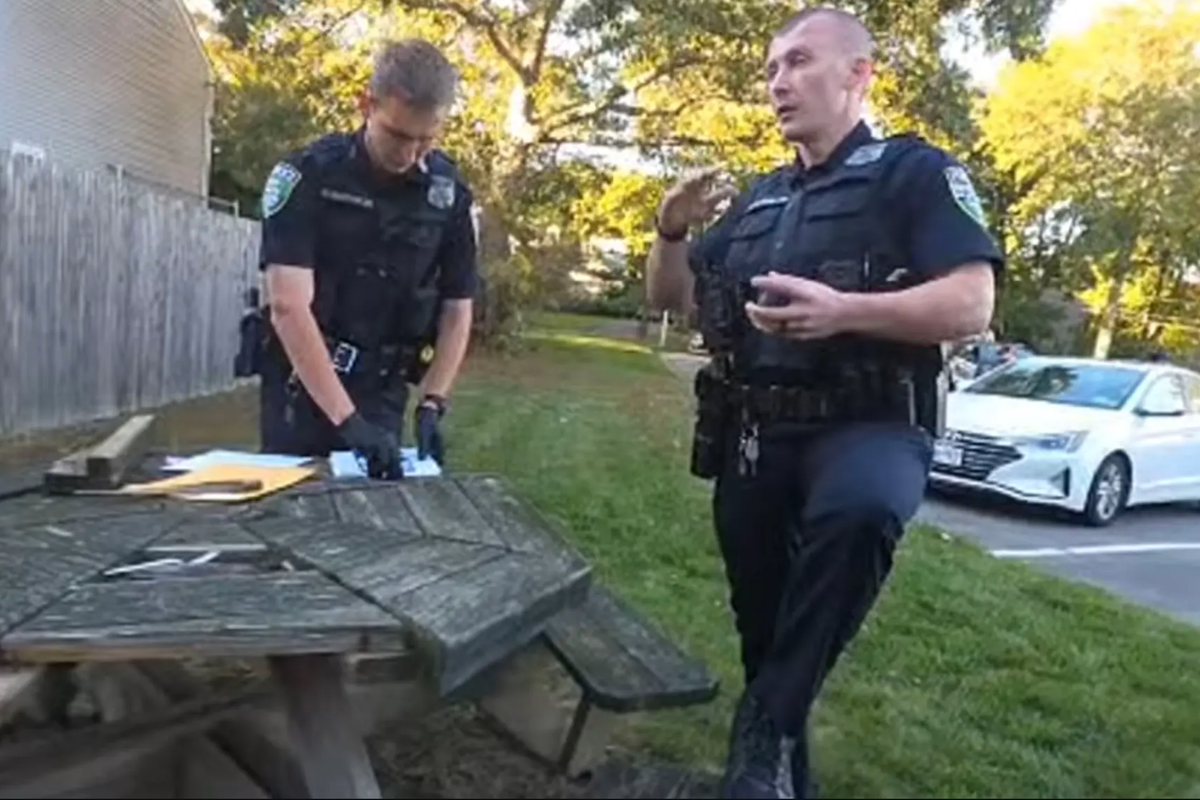This article is written by a student writer from the Her Campus at U Conn chapter and does not reflect the views of Her Campus.
I’ve never been much of a horror book reader. I was able to delve into the land of romance and miscommunication tropes, thrillers and unreliable narrators, but I never felt confident enough in a book to display horror correctly. That was until I got my hands on The Long Walk by Stephen King.
Published in 1979, the dystopian horror novel follows the story of Ray Garraty, often referred to as “Garraty,” and 99 other young men competing in a contest called “The Long Walk,” in which they must walk without stopping. They must maintain a speed of four miles per hour, and if they fall under, they are issued a warning. This warning can be rescinded an hour later if the walker doesn’t experience further trouble. Get to three warnings, however, and your next will be your “ticket.” The last walker standing wins “the Prize,” which is the granting of any one wish, and a sum of money.
Walk or die. It is that simple.
What I am much of, however, is a horror movie fan, so when I heard there would be a film adaptation of The Long Walk, there was no way I would pass up the opportunity to see it. I had finished reading the book on the day the film was released, and naturally, I saw it two days later. As I watched the movie, I had my Notes app open and ready to be filled with comparisons.
Afterward, I reflected on my notes (which may be the longest Note I have on my phone) and wanted to answer the age-old question: was the movie better than the book? Here are the major changes made to the film that I found helped me get to my answer.
Ray’s Story
Throughout the book, we follow Ray Garraty through his words, actions, thoughts, memories and relationships. One relationship prominent in Garraty’s life is with his girlfriend, Jan. Jan and his mom made him a promise to see him in their hometown of Freeport, something he used as motivation to get him through The Long Walk. Jan’s existence, however, was completely erased from the film. In the beginning, as the boys talk about family, Garraty shares with his friends McVries, Baker and Olson that he had broken up with his girlfriend to come to The Long Walk.
This was a change that disappointed me simply because I know I would’ve been a sucker for his and Jan’s reunion scene. Described in the book, his reunion with Jan ended up being a brush with death as he fell into her arms and stayed there long enough to earn himself three warnings, which McVries (his closest friend on The Walk) had to pull him out of. As I read that scene, I was hoping to see the love and fear exist in Garraty’s eyes at the same time in the film. Cutting their relationship out of the film entirely disappointed me quite early on, but I persevered nonetheless.
 Original photo by Mariza Klimala
Original photo by Mariza KlimalaLack of a Spectacle
One of the most chilling aspects of the book is the crowds, the herds of people who come together on the sidelines of the road the men are traveling and dying on. Though the plot has aspects similar to that of The Hunger Games, these crowds would not raise money to be able to give the men food, water, or any other kind of assistance. The crowds were simply there to watch the brutality of it all and cheer on their favorite Walkers.
In the film, crowds were not allowed to gather along the road until the end of the line. Although I know this was a realistic change in terms of casting, time and space, I would’ve wished to see the faces of those in the crowds. I feel that a lot of movies coming out recently have displayed the evil side of humanity and of institutions, and this movie could’ve shown it most: the horror, the desire to watch people die, and the lack of understanding that they were human beings. I felt this movie could have given a message on the epidemic of desensitization we are experiencing in the media today.
Scramm Erasure
One of the characters that made me fall in love with this book was Scramm, a large and built young man who many people bet on to win The Long Walk as a whole. He had been introduced about a third of the way in, surprisingly late for me to grow such a connection to him, but his story was something I was looking forward to seeing translated on screen.
Scramm revealed to Garraty that he had a pregnant wife named Cathy, making him the only young man of the 100 to be married. Soon after his introduction, there was a downpour of rain followed by a cold night. The next morning, Scramm was delirious and ended up becoming incredibly ill– he contracted pneumonia. Upon hearing this, the boys, all 40 left, made a pact that whoever won should give Cathy money to support their child. Ultimately, Scramm said goodbye to the boys and made a friend with whom he walked to the side of the road, sat down, and earned his ticket.
In the film, Scramm was never introduced and never existed. Two components of his character were divided into two separate characters in the movie: Stebbins, who contracted an illness similar to that of Scramm’s which affected his strength throughout the walk, and Olson, a friend of Garraty’s who was given the role of the only married young man in the Walk, only revealed after his death and still led to the mens’ pact. Not including Scramm in the story disappointed me, as I was impressed by his grit in the book — walking while knowing he had a wife and kid on the way and while having pneumonia — and I wanted to see that reflected on screen.
The End
Every social media post you will have seen about this movie has been in tears, and it will have been because of the biggest change the filmmakers decided to make.
In the book, you follow Ray through his journey of “The Long Walk,” so naturally, you’re prepared to witness his victory. Thankfully, after McVries had decided to finally sit down and after Stebbins collapsed, Ray had won The Long Walk. It would be cruel to make readers create an attachment to the main character just to have him get his “ticket” second to last, wouldn’t it?
The film, however, changed this drastically and didn’t care how cruel it was. In the final two, after McVries and Garraty had walked a few more miles together, McVries decided to sit down. He had earned two warnings before Garraty lifted him off the ground and told him to keep walking with him, only to then sit down himself and earn his ticket. McVries won The Long Walk and used his wish to fulfill Garraty’s: to wish for a gun to kill the Major, the man behind it all.
Although this ending crushed me, it led me to my answer.
Was the movie better than the book? My answer is that everything about the book was better except for the ending. The movie took the cake for its ending, regardless of how it left me in tears when I left the theater. Seeing the movie on the big screen was worth it, and I would recommend it to anyone I come across, but I would give an even stronger recommendation for the book.

.jpeg)




































 English (US) ·
English (US) ·